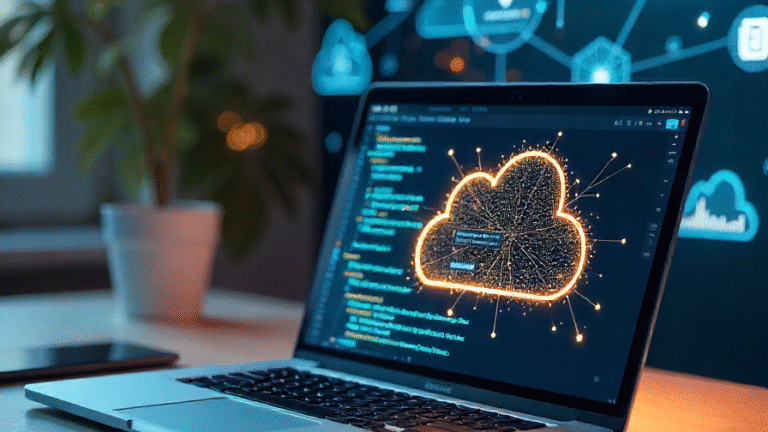
The Role of Software in a Rapidly Changing World
Software has become the backbone of modern life. From the apps on our phones to the platforms that run global businesses, it quietly powers nearly everything around us. While hardware provides the physical tools, software is what brings them to life—translating human needs into digital solutions.
The story of software is one of evolution, constant adaptation, and endless innovation. To understand where it’s heading, we need to examine its current landscape, the challenges it faces, and the opportunities that lie ahead.
A Brief Look Back
In its earliest days, software was limited to basic instructions, enabling machines to carry out simple calculations. Programmers wrote code directly in assembly language, a painstaking process that required intimate knowledge of hardware.
The arrival of higher-level languages like COBOL, Fortran, and later C opened the door for more complex systems. As computing power increased, so did the possibilities. Operating systems emerged to manage resources, while productivity tools transformed workplaces.
By the 1990s and 2000s, software had moved beyond corporate settings into homes, schools, and eventually pockets—thanks to the rise of smartphones. What was once niche became everyday.
The Present Landscape
Today’s software ecosystem is vast and diverse, spanning industries and shaping economies. Key areas include:
-
Enterprise Systems: Tools like ERP and CRM help organizations manage resources, customers, and operations at scale.
-
Consumer Applications: From messaging apps to fitness trackers, these shape daily habits and personal routines.
-
Cloud Platforms: Services like AWS, Azure, and Google Cloud have replaced traditional infrastructure, making powerful computing accessible to businesses of all sizes.
-
Open Source Projects: Community-driven initiatives provide alternatives to proprietary systems and often act as innovation hubs.
-
AI-Powered Software: Intelligent applications are changing how we search, shop, and work.
This diversity reflects both demand and opportunity—software adapts wherever people need efficiency, connection, or creativity.
Why Software Matters
The importance of software can’t be overstated. It doesn’t just enable convenience—it drives transformation.
-
Economic Growth: Entire industries, from fintech to healthtech, exist because of software.
-
Accessibility: Digital platforms break barriers, providing access to education, banking, and healthcare across borders.
-
Innovation Driver: New businesses often begin with a software solution rather than a physical product.
-
Cultural Impact: Social media platforms, streaming services, and creative tools have reshaped how people interact and express themselves.
Software isn’t just technical—it’s social, cultural, and economic all at once.
The Challenges Ahead
For all its advantages, the software world also faces significant hurdles:
-
Security Risks: As reliance grows, so do threats. Cyberattacks, data breaches, and ransomware continue to rise.
-
Privacy Concerns: Collecting user data raises questions about consent and surveillance.
-
Complexity: With endless tools available, businesses often face integration issues or “tool fatigue.”
-
Digital Divide: While some regions thrive on cutting-edge platforms, others still lack basic access.
-
Sustainability: Large-scale systems consume energy at unprecedented levels, raising environmental concerns.
Balancing innovation with responsibility is now one of the industry’s greatest challenges.
Emerging Trends
Looking at current developments, several trends are shaping the next chapter of software:
-
Cloud-Native Applications
Software built directly for cloud environments promises scalability, resilience, and faster development cycles. -
Low-Code and No-Code Platforms
These tools empower non-technical users to build applications, reducing dependency on specialized developers. -
Artificial Intelligence and Machine Learning
Intelligent features are being embedded into everyday tools, from chat assistants to predictive analytics. -
Edge Computing
Instead of relying solely on distant servers, processing power is moving closer to the source—critical for IoT and real-time applications. -
Cross-Platform Development
Frameworks that allow apps to run seamlessly across devices (desktop, mobile, web) are becoming essential. -
Sustainability-Oriented Design
Developers are exploring ways to build energy-efficient software to reduce the carbon footprint of data centers.
Human-Centered Software Design
Technology is at its best when it serves people effectively. That’s why user experience (UX) has become central. A well-designed application is not just functional—it’s intuitive, inclusive, and adaptable.
-
Accessibility: Features like screen reader support, voice control, and adaptable text sizes ensure software serves everyone.
-
Simplicity: The most powerful tools are often the easiest to use, hiding complexity behind clean interfaces.
-
Feedback Loops: Gathering user insights helps refine applications to better meet real-world needs.
Software that ignores human experience often fails, no matter how advanced it may be technically.
Careers and Skills in the Software World
The software industry continues to be a major employer. Roles extend far beyond coding:
-
Developers: Build and maintain applications.
-
Product Managers: Bridge business goals with user needs.
-
Designers: Ensure usability and accessibility.
-
Quality Assurance Engineers: Test for reliability and performance.
-
Cybersecurity Specialists: Protect systems and data.
Continuous learning is essential. Frameworks, languages, and practices evolve rapidly, and professionals must adapt to stay relevant.
The Future of Software
So, where is software heading? Several possibilities stand out:
-
More Personalized Experiences: From tailored health apps to adaptive learning tools, customization will become standard.
-
Deeper Integration with Physical World: Smart homes, connected cars, and wearable devices will blur digital and physical boundaries.
-
Ethical Frameworks: As software influences more of life, ethical standards will play a bigger role in guiding development.
-
Global Collaboration: Open-source communities and cross-border projects will continue to fuel innovation.
The common thread is adaptability—software will keep evolving to meet human needs, whatever form those take.
Final Thoughts
Software has quietly shaped the modern era, moving from behind-the-scenes code to the forefront of daily life. It drives economies, connects people, and enables new forms of creativity. But with that power comes responsibility—ensuring systems are secure, accessible, and designed with humanity in mind.
As we move forward, one thing is certain: software is no longer just a tool. It’s a foundation for progress. The challenge lies in using it wisely, balancing innovation with ethics, and making sure its benefits are shared widely.
